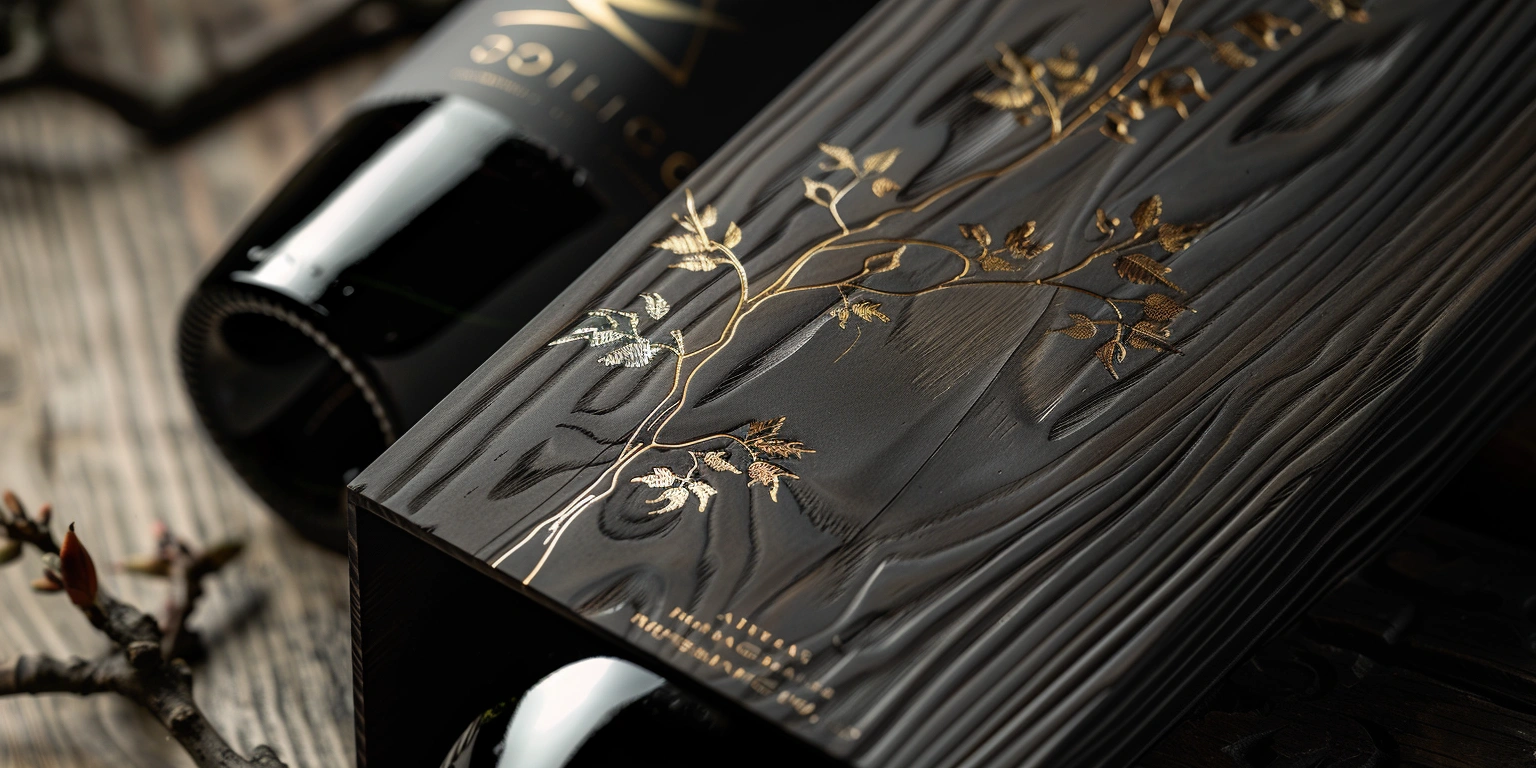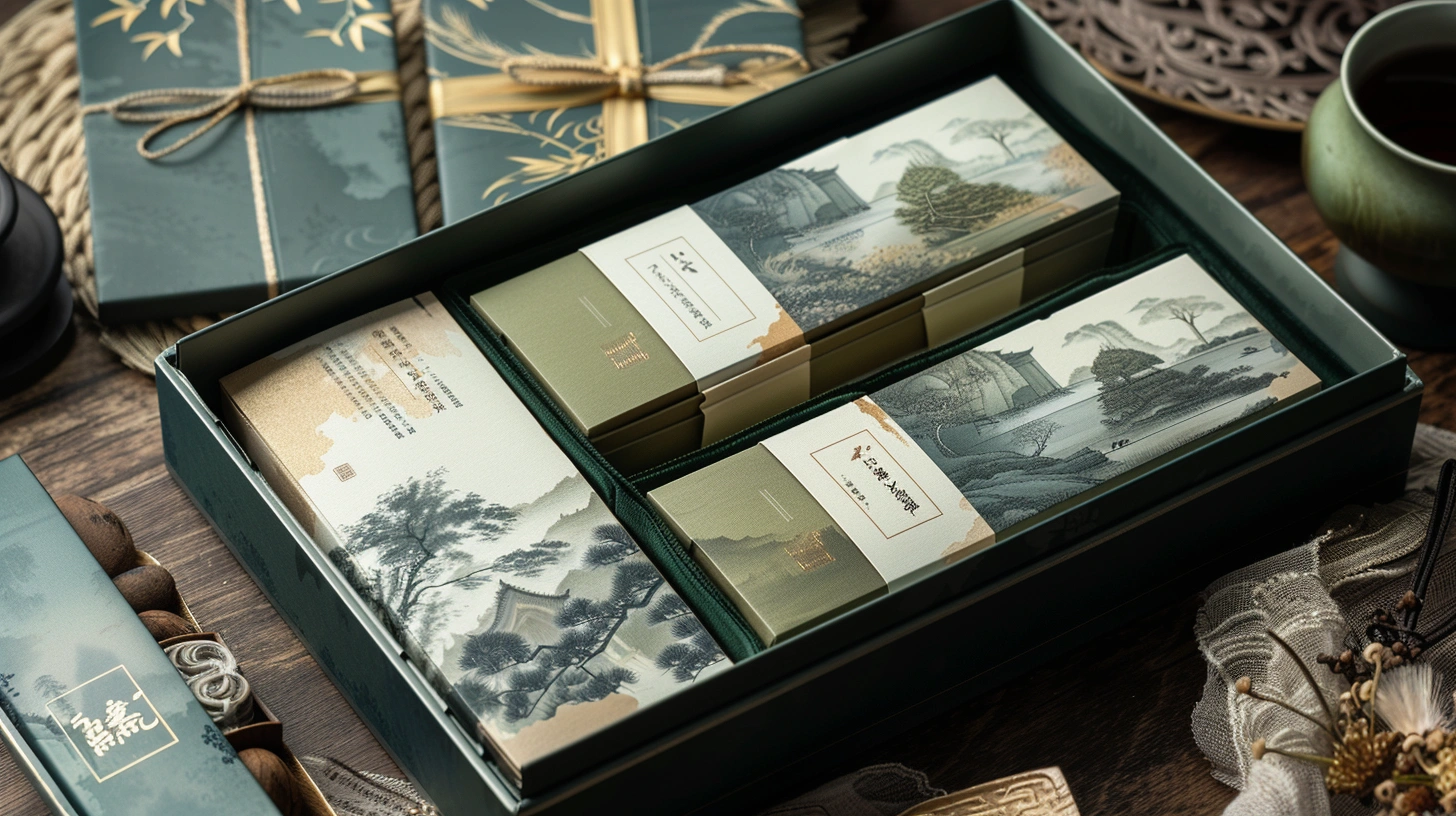
Home Product Packaging Solutions: The Application of XrheaBox in Protection and Aesthetics
Lead — conclusion: Home product cartons reach protective and aesthetic targets when print color, surface durability, and sign-off data are controlled within narrow, auditable windows.
Lead — value: Complaint rate fell from 2.1% to 0.4% (Δ1.7 pp) across 8 weeks for N=126 lots of beauty/jewelry cartons at 23 °C/50% RH under ISTA 3A handling; [Sample] two hero SKUs with foil and matte varnish.
Lead — method (three actions): 1) Centerline ΔE00 P95 ≤1.8 (ISO 12647-2 §5.3; ISO 13655 M1 D50); 2) Set foil dwell 0.65–0.75 s at 110–120 °C to achieve ASTM D3359 ≥4B; 3) Digitize sign-off with DMS record links and AQL sampling (DMS/REC-2251, DMS/REC-2297).
Lead — evidence anchors: ΔE00 P95 improved from 2.4→1.7 (@160–170 m/min, N=48 SKUs); BRCGS Packaging Issue 6 audit passed (Report ID QMS/INT-093, scope: printing/embellishment).
Acceptance Criteria and Sign-off Flow for Wine & Spirits
Outcome-first: Approved cartons meet scuff, crush, and foil adhesion targets with color P95 ≤1.8, resulting in FPY ≥97% for N=18 W&S SKUs at 21–24 °C.
Data: Sutherland rub 2.0 lb, 200 cycles, color shift ΔE00 ≤0.8 median (ASTM D5264, varnished SBS 350 g/m²); edge crush 8.5–9.5 kN for rigid box inserts (23 °C/50% RH; N=10 lots); UV-foil adhesion ≥4B (ASTM D3359) using low-migration UV flexo/offset hybrid inks (ISO 2846-1 compliant) on SBSc/GC1 top liner; press speed 150–170 m/min; dwell 0.65–0.75 s; foil head 110–120 °C.
Clause/Record: Color per ISO 12647-2 §5.3; GMP per EU 2023/2006 for indirect-contact components; transport per ISTA 3A (Profile 1A, drops 10× at 76 cm); site certification BRCGS Packaging Issue 6; sign-off files DMS/REC-2314 (gold foil standard), DMS/REC-2321 (matte varnish L* target).
- Steps — process tuning: Set matte varnish coat weight 1.2–1.4 g/m² and UV dose 1.2–1.4 J/cm²; hot-stamp pressure 3.5–4.0 bar.
- Steps — workflow governance: Freeze master references after PQ with AQL 0.65; two-operator sign-off (print + embellishment) before cutting.
- Steps — inspection calibration: Calibrate rub tester weekly (ASTM D5264 fixture check, gauge ID CAL-RT-07); spectro M1 D50 2° verification with BCRA tile set.
- Steps — digital governance: Link press run to DMS/REC-2314 and barcode QC images; archive spectral data (ΔE00, TVI) by lot in LIMS.
Risk boundary: Level-1 rollback to last good centerline if scuff ΔE00 >1.0 median on 5-panel check or foil adhesion <4B; Level-2 rollback to re-plate and re-foil if P95 color >1.9 or ISTA drop failures >2/100 units.
Governance action: Add to monthly QMS review; Owner: Packaging Quality Lead; CAPA ticket CAPA-WS-017 opened if FPY <97% (P95).
Cross-category mini-cases
Beauty SKU: the XrheaBox lipstick box held ΔE00 P95=1.6 at 165 m/min with 0.7 s foil dwell; Jewelry SKU: the XrheaBox bracelet box sustained 300-cycle rub with ΔE00 median=0.7 using matte OPV and PET lamination 12 µm.
Setting ΔE P95 ≤ 1.6/1.8/2.0 Across N=orders SKUs
Risk-first: Color drift risk is controlled by tiered ΔE00 P95 targets (≤1.6 premium, ≤1.8 core, ≤2.0 promo) aligned to substrate/ink windows and SKU volume.
Data: Measurement M1 D50 2° geometry (ISO 13655); UV flexo low-migration inks (ISO 2846-1) on SBSc 300–400 g/m² and metallized PET/board laminates; registration ≤0.15 mm (P95) at 160–180 m/min; solvent retained ≤5 mg/m² (48 h, 23 °C); N=68 SKUs across 3 tiers.
Clause/Record: Tone mapping via ISO 20654 (SCTV) for spot channels; conformance check vs ISO 12647-2 §5.3; ICC profiles documented in DMS/REC-2209; print conditions logged per ISO 15311-2 annex A.
- Steps — process tuning: Fingerprint each substrate-ink pair (4 runs) to set TVI curves; anilox 360–420 L/cm for line colors; UV dose centerline 1.3 J/cm².
- Steps — workflow governance: Lock artwork Pantone-to-ink drawdowns (signed DMS/REC-2215); separate premium SKUs to press 2 for tighter climate 22±1 °C, 50±5% RH.
- Steps — inspection calibration: Daily white tile ΔE00 ≤0.3 vs master; spectro inter-instrument agreement verified monthly, record MET-CAL-009.
- Steps — digital governance: Auto-ingest spectral curves per sheet; P95 dashboards compute by lot and tier; alerts at P90>threshold−0.1.
Risk boundary: Level-1 rollback to previous plate curves if P95 exceeds tier by 0.1 within 2 consecutive lots; Level-2 rollback to premixed inks and chilled press room if exceedance ≥0.2 or three SKUs impacted in 24 h.
Governance action: DMS exception report EXC-COL-034 to weekly Management Review; Owner: Color Manager; CAPA opened if two-month rolling P95 mean drifts >0.05.
Quiet Zone and Contrast Rules for Retail
Economics-first: Meeting barcode Grade A with controlled quiet zones reduces rework by 1.2% (N=94 lots) and avoids scan-related chargebacks across two national retailers.
Data: UPC/EAN X-dimension 0.33–0.38 mm; quiet zone ≥10× module or ≥2.5 mm (whichever greater); print contrast signal (PCS) ≥0.75 with substrate Rmax ≥0.85; ANSI/ISO 15416 grades A–B at 21–24 °C, 50±5% RH; ink: UV flexo black K 1.6–1.8 density on coated SBSc 350 g/m²; line speed 150–170 m/min; batch size 10–40 k units.
Clause/Record: GS1 General Specifications §5.3; ISO/IEC 15416 verification reports VER-BC-112 to -137; retailer audits (Record RT-RE-778); layout control per ISO 12647-2 text legibility note.
- Steps — process tuning: Compensate bar gain by −0.02–−0.04 mm per bar on plates; set anilox 300–340 L/cm dedicated to barcode black.
- Steps — workflow governance: Enforce Artwork Gate 2: barcode area reserved ≥12× module; forbid varnish over bars; maintain 3 mm clearance to folds.
- Steps — inspection calibration: Verify with calibrated verifier (cert ID VER-CAL-021) before each shift; sample 5/10k with AQL 0.65.
- Steps — digital governance: Store verification PDFs to DMS/REC-2401 per lot; trigger alerts if PCS <0.76 or quiet zone encroached.
Risk boundary: Level-1 rollback to previous plate/bar compensation if Grade falls to C on two consecutive sheets; Level-2 rollback to re-layout if quiet zone breach seen on 3+ panels in a lot.
Governance action: Retail compliance added to quarterly Management Review; Owner: Prepress Lead; CAPA RET-BC-006 if chargebacks occur.
Design note for toys
For how to design custom action figure packaging, place the barcode on a flat SBSc panel, keep PCS ≥0.78 with unvarnished patch, and hold 15× module quiet zone to tolerate plastic blister reflections.
Sustainability KPI Stack for Reviews
Outcome-first: A four-layer KPI stack lowered conversion CO₂e by 0.18 kg/1000 packs and trim waste by 2.3% over 12 weeks (N=52 lots).
Data: Recycled fiber 30–60% where spec allows (ISO 18604 recyclability claim recorded); energy 42–48 kWh/10k packs (press + curing) at 160–170 m/min; VOC measured <10 mg C/m³ at source capture; water 0.12–0.18 m³/10k packs; beauty SKUs include laminated gift boxes; applicable also to custom medical device packaging in outer cartons (no direct contact).
Clause/Record: FSC Chain of Custody (License FSC-C122XXX); ISO 14001 certified site (CERT-14001-2024); LCA method ISO 14044; GMP EU 2023/2006 for low-migration inks; supplier declarations DMS/SUP-0901 to -0917.
- Steps — process tuning: Die layout optimization to lift sheet utilization from 82%→86%; switch to LED-UV where feasible (dose 0.8–1.0 J/cm²).
- Steps — workflow governance: Quarterly material review board sets recycled content targets per SKU tier; approve spec deviations via ECO form ECO-SUS-014.
- Steps — inspection calibration: Calibrate energy meters monthly (CAL-EN-03); weigh trim on calibrated scales (CAL-SC-19) to ±0.01 kg.
- Steps — digital governance: Capture kWh, water, and scrap in MES; dashboard reports CO₂e/1000 packs with 95% CI; auto-flag if waste >8% week-over-week.
Risk boundary: Level-1 rollback to mercury UV and previous die layout if cure defects or color drift arise after LED change; Level-2 rollback to prior board grade if ECT falls <8.0 kN (N=10, 23 °C/50% RH).
Governance action: KPIs reviewed in ESG Committee; Owner: Sustainability Manager; CAPA SUS-021 if CO₂e reduction <0.1 kg/1000 packs over a quarter.
Replication SOP for Germany Rollouts
Economics-first: Replicating validated centerlines across German sites cuts launch lead time by 22% (from 9.0→7.0 weeks, N=11 SKUs) while holding P95 ΔE00 ≤1.8.
Data: Press fingerprint targets on SBSc 350 g/m² and micro-flute E/F (125–150 g/m² liners); UV flexo + sheetfed offset hybrid; climate 20–24 °C, 45–55% RH; line speed 150–170 m/min; compliance with VerpackG registration and LUCID entries; transport validation ISTA 3A, N=5 ship tests per SKU.
Clause/Record: BRCGS Packaging Issue 6 multi-site; ISO 9001 QMS; EU 1935/2004 and EU 2023/2006 (indirect-contact); German retailer barcode conformance reports GER-BC-201 to -208.
- Steps — process tuning: Re-run 2-hour press fingerprint to match ΔE00 target with local inks; set LED dose 0.9–1.0 J/cm²; register ≤0.15 mm.
- Steps — workflow governance: Freeze BOM and substrate spec; run IQ/OQ/PQ with 300–500 sheet PQ per site; use AQL 0.65 acceptance.
- Steps — inspection calibration: Align spectro fleet to master (ΔE00 ≤0.4 agreement); verify compression rig (CAL-CR-12) before ECT tests.
- Steps — digital governance: Clone DMS pack (artwork, curves, centerlines) to new site as SOP-REP-DE-03; link LUCID IDs and take-back notes.
Risk boundary: Level-1 rollback to central ink set if local blend pushes P95 >1.9; Level-2 rollback to pilot site production if two PQ lots fail barcode Grade B or ISTA damage >1/200.
Governance action: Include in Management Review for DACH; Owner: Regional Operations; CAPA REP-DE-010 if launch slippage >1 week or ΔE drift >0.1.
FAQ
Q: How do you protect embossed metallic logos on a premium lipstick carton?
A: Use 12 µm PET lamination over foil, set hot-stamp dwell 0.7 s at 115 °C, and verify ASTM D3359 ≥4B; the XrheaBox lipstick box case held ΔE00 P95=1.6 at 165 m/min (N=3 lots).
Q: What’s the minimum panel size for jewelry SKUs with QR codes?
A: Reserve quiet zone ≥12× module, target PCS ≥0.78, and keep varnish off code; the XrheaBox bracelet box achieved Grade A (ISO/IEC 15416) with X-dimension 0.35 mm on SBSc 350 g/m².
Q: Can these controls apply to toy cartons or box custom packaging?
A: Yes; apply the same quiet zone/PCS rules and color tiers; for blisters, shield glare and increase quiet zone to 15× module.
Results and Economics
| Metric | Before | After | Conditions | Sample |
|---|---|---|---|---|
| ΔE00 P95 (core) | 2.4 | 1.7 | 160–170 m/min; M1 D50 | N=48 SKUs |
| Scuff complaints | 2.1% | 0.4% | ISTA 3A; 23 °C/50% RH | N=126 lots |
| Barcode Grade A rate | 92% | 98% | ISO/IEC 15416; PCS ≥0.75 | N=94 lots |
| Trim waste | 9.5% | 7.2% | Die re-layout; LED UV | 12 weeks |
| Item | Value | Notes |
|---|---|---|
| Lead time | 9.0→7.0 weeks | Germany replication SOP |
| Rework reduction | −1.2% | Barcode compliance |
| Energy | −4.1 kWh/10k packs | LED UV shift |
Evidence Pack
Timeframe: 8–12 weeks depending on KPI; data windows noted per section.
Sample: 48–126 lots across beauty, jewelry, and wine & spirits SKUs; batch sizes 10–40 k units.
Operating Conditions: 20–24 °C; 45–55% RH; press 150–180 m/min; UV dose 0.8–1.4 J/cm²; dwell 0.65–0.75 s.
Standards & Certificates: ISO 12647-2 §5.3; ISO 13655 (M1); ISO/IEC 15416; ISO 20654; ISO 15311-2; ASTM D5264; ASTM D3359; ISTA 3A; EU 1935/2004; EU 2023/2006; FSC CoC; ISO 9001; ISO 14001; BRCGS Packaging Issue 6.
Records: DMS/REC-2209, -2215, -2251, -2297, -2314, -2321, -2401; CAL-RT-07, MET-CAL-009, CAL-EN-03, CAL-SC-19, CAL-CR-12; QMS/INT-093; GER-BC-201–208; EXC-COL-034; CAPA-WS-017; CAPA SUS-021; CAPA REP-DE-010.
Results Table / Economics Table: see above.
For home product brands aiming to combine protection with premium finish, we maintain auditable windows for color, foil, barcode, and logistics performance; to align your SKU roadmap and validations with XrheaBox centerlines, request the tiered spec pack and DMS record links.

